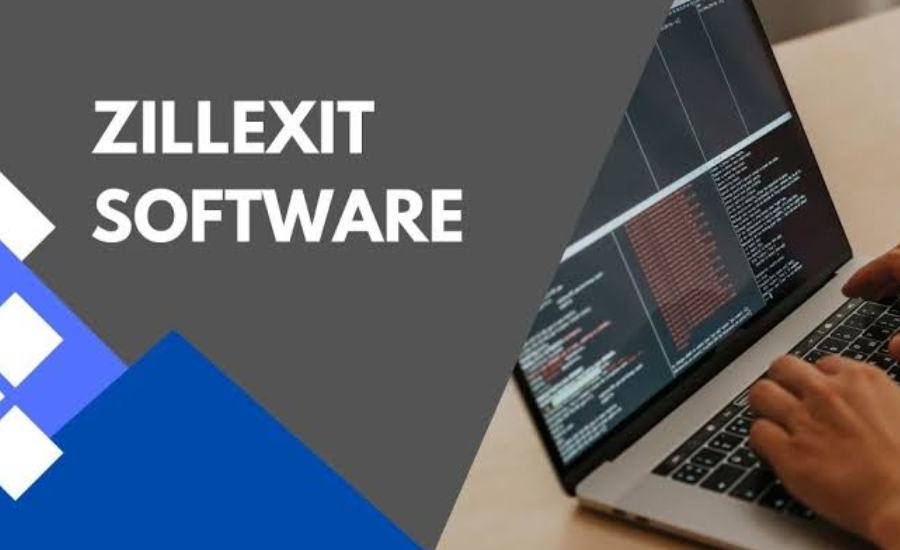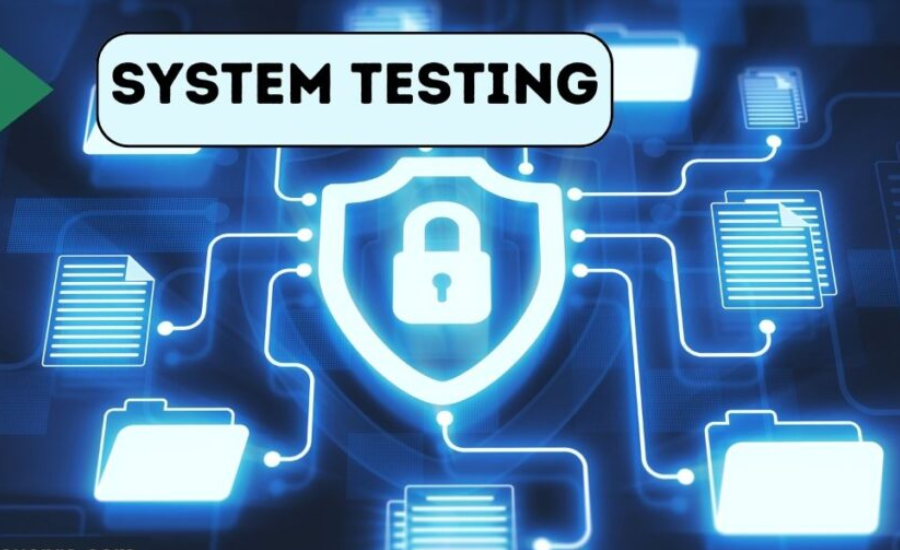What Is Testing In Zillexit Software?
In the realm of software development, testing is a fundamental process that cannot be overlooked. For a company like Zillexit, which develops a diverse range of applications, meticulous testing is vital to uphold high standards of quality and reliability.
At Zillexit, testing is more than just a routine; it’s a critical component of their commitment to delivering exceptional software. Recognizing the importance of identifying bugs, validating functionality, and assessing user-friendliness, their testing procedures are designed to build confidence among users and prevent issues post-release.
The dedicated testing team at Zillexit is fully aware of the impact that undetected issues can have on the user experience. To mitigate these risks, they subject every piece of software to rigorous testing before it becomes available to the public. This thorough examination ensures that each application operates seamlessly and securely.
Zillexit’s approach to software testing involves a range of comprehensive strategies and methods. Their testers invest significant time and effort into simulating real-world scenarios, meticulously searching for any potential bugs or deficiencies. This proactive approach ensures that users experience flawless performance from the moment they start using the software.
By adhering to stringent testing protocols, Zillexit guarantees that their software meets the highest standards for performance, stability, and usability. Let’s delve deeper into the specific testing practices employed to ensure the excellence of Zillexit’s diverse software offerings.
What Is Application In Zillexit Software?
In the Zillexit ecosystem, an application refers to a distinct software program tailored to perform specific functions and tasks. Zillexit provides a diverse suite of business applications designed to enhance and automate various organizational processes. This includes solutions for accounting, payroll, human resources (HR), customer relationship management (CRM), and more.
Each application within Zillexit serves a unique purpose. For instance, the accounting application facilitates the management of accounts receivable and payable, generates financial reports, tracks expenses, and handles other essential accounting functions.
The payroll application simplifies employee payment processing and tax calculations, ensuring accuracy and efficiency. Zillexit’s software applications are modular, allowing businesses to choose the specific tools that best fit their operational needs.
A standout feature of Zillexit’s suite is its seamless integration capabilities. Applications within the Zillexit platform are designed to work harmoniously together, ensuring smooth data flow and workflow management. This integration optimizes business operations by facilitating efficient information exchange across various applications.
Employee Of boarding

Zillexit enhances the efficiency of the employee offboarding process with its comprehensive suite of tools. This feature-rich system helps Human Resources (HR) manage the departure of employees in a seamless and organized manner.
When an employee is set to leave the organization, Zillexit automates several key offboarding tasks. HR can effortlessly generate and send termination letters, ensuring that all necessary documentation is handled promptly. The system also manages the deactivation of email and system access, safeguarding company data and maintaining security.
Additionally, Zillexit simplifies the process of collecting company property, such as laptops, ID cards, and other equipment. This ensures that all assets are returned and accounted for, reducing the risk of losses.
By streamlining these procedures, Zillexit not only facilitates a smooth transition for departing employees but also helps maintain operational continuity. The automation and integration of these tasks contribute to a more efficient and effective offboarding process, ultimately benefiting both the organization and its outgoing staff.
Exit Interviews & Surveys
Zillexit significantly enhances the offboarding experience by incorporating features for conducting exit interviews and sending departure surveys. These tools are designed to capture detailed feedback from departing employees, offering a deeper understanding of their reasons for leaving and insights into potential areas for organizational improvement.
The software facilitates structured exit interviews, allowing HR professionals to systematically gather feedback on various aspects of the employee’s experience. This can include their views on company culture, management, work environment, and overall job satisfaction. By automating the scheduling and administration of these interviews, Zillexit ensures that this crucial feedback is collected efficiently and consistently.
In addition to exit interviews, Zillexit sends out departure surveys to employees. These surveys are designed to solicit honest and constructive feedback about their time with the organization. Questions might cover topics such as the effectiveness of training, opportunities for professional growth, and the support received from management. The responses provide valuable data that can be analyzed to identify trends and areas where the company can make improvements.
By integrating these feedback mechanisms into the offboarding process, Zillexit helps organizations gain actionable insights that can lead to enhanced employee retention strategies and overall organizational effectiveness. This approach not only supports the departing employees but also contributes to the continuous improvement of the workplace environment for current and future staff.
Compliance Management
Zillexit ensures strict adherence to labor laws and regulations throughout the offboarding process. The software is equipped to handle a range of legal and administrative tasks essential for compliance, thus safeguarding both the organization and its departing employees.
One of the key functions is managing final wage and benefit payments. Zillexit automates the calculation and distribution of any outstanding wages, bonuses, or other compensation that employees are entitled to receive upon their departure. This automation helps avoid errors and delays, ensuring that employees receive their due payments promptly and accurately.
Additionally, Zillexit manages COBRA (Consolidated Omnibus Budget Reconciliation Act) notifications, which are required to inform departing employees about their rights to continue health insurance coverage. The software automates the generation and sending of these notifications, ensuring that all legal requirements are met and that employees are aware of their options for maintaining health coverage after leaving the company.
The platform also handles non-compete agreements, ensuring that any legal obligations related to these agreements are addressed. It helps track and manage the enforcement of such agreements, including monitoring compliance and addressing any potential legal issues that may arise.
Beyond these specific tasks, Zillexit is designed to support a wide range of legal obligations associated with employee offboarding. This comprehensive approach not only helps streamline the offboarding process but also provides peace of mind by ensuring that all regulatory requirements are met efficiently and effectively.
Testing Techniques For ZillExit Software

To maintain the highest standards of quality and reliability in Zillexit Software, a diverse array of testing techniques is employed. These methods are integral to verifying that the software functions as intended and meets user expectations.
1. Functional Testing: This technique focuses on evaluating the software’s features and functionalities to ensure they operate according to the specified requirements. Functional testing checks whether each component of the software performs its designated tasks correctly and consistently.
2. Performance Testing: To assess how the software performs under various conditions, performance testing is carried out. This includes evaluating the system’s responsiveness, speed, and stability when subjected to different loads. Performance testing helps identify bottlenecks and ensures the software can handle expected user traffic and data volumes.
3. Usability Testing: This testing technique examines the software’s user interface and overall user experience. Usability testing aims to ensure that the software is intuitive, easy to navigate, and provides a satisfying user experience. Feedback from real users is collected to make necessary adjustments and improvements.
4. Security Testing: Given the critical importance of data protection, security testing is employed to identify potential vulnerabilities and threats. This includes testing for weaknesses that could be exploited by malicious actors and ensuring that the software adheres to security best practices and standards.
5. Compatibility Testing: Compatibility testing ensures that the software performs consistently across different environments, including various operating systems, devices, and browsers. This technique helps verify that the software is accessible and functional for all users, regardless of their chosen platform.
6. Regression Testing: As updates and changes are made to the software, regression testing is used to confirm that new modifications have not adversely affected existing functionality. This technique helps catch any unintended side effects of updates and ensures that previously resolved issues remain fixed.
7. Integration Testing: This technique focuses on testing the interactions between different components or modules of the software. Integration testing ensures that these parts work seamlessly together and that data flows correctly between them.
By employing these comprehensive testing techniques, Zillexit Software ensures that its products are reliable, secure, and user-friendly. Each technique plays a crucial role in validating the software’s performance and functionality, ultimately delivering a high-quality product to its users.
Black Box Testing
Black Box Testing is a methodology used to assess the functionality of Zillexit Software from the perspective of an end-user, without any insight into the underlying code or internal logic. This approach emphasizes evaluating the software based solely on its inputs and outputs, rather than its internal workings.
During black box testing, testers focus on how the software responds to various user inputs and whether it produces the expected results. This type of testing is crucial for ensuring that the software behaves correctly in real-world scenarios and meets the intended user requirements.
By interacting with the software as a typical user would, black box testing helps identify any discrepancies or issues in functionality that might affect the user experience. This method provides valuable insights into the software’s performance and usability, ensuring that it operates reliably and as intended from a user’s perspective.
White Box Testing

White Box Testing is a technique that scrutinizes the internal mechanisms of Zillexit Software, focusing on the internal code and architecture to identify potential flaws and ensure thorough code coverage. Unlike black box testing, which evaluates software based solely on external interactions, white box testing provides testers with full visibility into the software’s source code.
In this approach, testers design their test cases by understanding the software’s internal logic and structure. This enables them to create specific tests aimed at verifying individual code components, pathways, and integrations. By doing so, white box testing helps in detecting hidden errors, ensuring that all parts of the code are executed and function correctly.
The main goal of white box testing is to validate the internal operations of the software, guaranteeing that it performs as expected across various scenarios. This method helps in uncovering logical errors, verifying security measures, and confirming that the software adheres to its design specifications.
Regression Testing
Regression Testing is a crucial process that verifies whether recent updates or changes to Zillexit Software have compromised its existing functionalities. This type of testing is performed by re-evaluating the software after modifications have been made, to ensure that previously working features remain unaffected.
The primary aim of regression testing is to detect any unintended side effects caused by new changes. By re-running previously conducted tests, it confirms that recent adjustments have not introduced new bugs or issues into the software. This process helps in maintaining the overall integrity of the software, ensuring that enhancements or fixes do not inadvertently disrupt existing functionalities.
Performance Testing
Performance Testing assesses how well Zillexit Software performs under different conditions, focusing on metrics such as speed, responsiveness, and stability. This testing ensures that the software can handle its anticipated workload effectively without any decrease in performance quality.
During performance testing, the software is subjected to various scenarios to gauge its behavior under stress, load, and peak usage. The goal is to identify any performance bottlenecks or weaknesses that could impact user experience. By simulating real-world conditions, performance testing helps confirm that the software remains reliable and efficient, even under demanding circumstances.
Quality Assurance In Zill Exit Software
Quality assurance (QA) plays a crucial role in the development of Zillexit Software, guaranteeing that it adheres to top-tier standards for quality and dependability. Through a series of meticulous checks and evaluations, QA ensures that the software not only meets but exceeds the required benchmarks for functionality, performance, and user satisfaction. This rigorous process is designed to identify and address any issues before the software reaches the end user, thereby enhancing its overall reliability and effectiveness.
FAQs
1. What is the purpose of Zillexit’s software testing?
Zillexit’s software testing aims to ensure that its applications are free from bugs, perform as intended, and provide a smooth user experience. Testing helps identify and resolve issues before the software is released to users, maintaining high standards of reliability and quality.
2. What types of software testing does Zillexit use?
Zillexit employs various testing methods, including black box testing, white box testing, regression testing, and performance testing. Each method targets different aspects of the software to ensure comprehensive evaluation and robustness.
3. How does black box testing work?
Black box testing focuses on evaluating the software’s functionality from an end-user perspective without knowledge of the internal code structure. Testers assess how the software responds to different inputs and verify that it produces the correct outputs.
4. What is the role of white box testing in Zillexit’s QA process?
White box testing involves examining the internal code structure and logic of the software. Testers use their knowledge of the code to design tests that ensure complete coverage and identify potential errors within the software’s internal workings.
5. Why is regression testing important?
Regression testing ensures that new updates or changes to the software do not negatively impact existing features. It involves re-evaluating the software after modifications to verify that no new defects have been introduced and that previous functionalities remain intact.
Conclusion
In conclusion, Zillexit places a strong emphasis on rigorous software testing to uphold the highest standards of quality and reliability. By employing a range of testing techniques—such as black box, white box, regression, and performance testing—the company ensures that its software not only meets functional requirements but also delivers a seamless user experience. The comprehensive QA process is integral to identifying and addressing potential issues before the software reaches its users, thereby fostering trust and satisfaction. Through its commitment to meticulous testing and quality assurance, Zillexit reinforces its dedication to delivering exceptional software solutions.
Stay in the know with the latest news and updates on: aljazeeraradio

